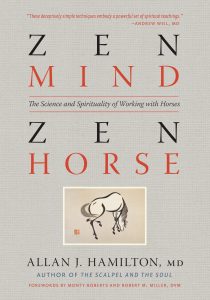
Breed Facts
Status:
Critical
Use:
Draft
Adult Weight:
1900–2200 lbs.
Adult Height:
16.2-19.2 hands / Average 17.2 hands
Temperament:
Docile, Easygoing
Experience Level:
Novice-Experienced
Notes:
Strong; gentle; great endurance; feathered legs; newfound popularity for jousting and medieval tournaments; exceptionally calm
SHIRE
Shire horses get their name from the rural “shires,” or counties, in England, where they were traditionally used for agriculture, heavy hauling, and war. The breed is believed to be a descendent of the “Great Horse” of medieval England, a large, strong mount that could carry a knight and armor weighing up to 400 pounds with swiftness and agility. These native English horses were crossed with Flemish stallions in the 1200s and Dutch Friesians in the 1500s. This region of Lincolnshire thus became home to a distinctively large, black horse called the Lincolnshire Black or Heavy Black.
Large horses were used for long-distance hauling and heavy transport over rough country roads and uneven cobblestone streets of cities. The Heavy Black gradually spread across England in the 1700s. The modern Shire was developed around 1790 using the breeding methods pioneered by livestock breeder Robert Bakewell (also known for his work with Leicester Longwool sheep and English Longhorn cattle). Further standardization was undertaken in the late 1800s, with the formation of a breed society in 1878 and the choice of the breed name “Shire” in 1884.
The first Shire arrived in the US in 1853, but more aggressive importation did not begin until the late 1800s. The American Shire Horse Association was founded in 1885, and their registry has operated continuously (except from 1955 to 1961, when most activity ceased and the breed almost became extinct in the US). By the early 1900s, the Shire had begun to overtake the Percheron as the most popular draft horse; they were favored in urban areas of the US because of their size and “flash”.
The Shire peaked in popularity between 1880 and World War I, but, as with most draft horses, its population fell when agriculture and transportation were mechanized after World War II. Also, farmers who still used horses were looking for smaller draft breeds that were less expensive to keep. The number of Shires was at its lowest in the early 1960s, but they have slowly begun to recover since then. Like Clydesdale horses, the Shire has benefited from its use in promotional hitches, especially those advertising breweries. The Whitbread’s hitch of gray Shires, for example, is as well known in England as the Budweiser Clydesdale hitch is in the United States.
Shires average 17.2 hands (70″) although they can range from 16.2 to occasionally 19.2 (76″) hands, with a weight up to 2,200 lbs. (mares and geldings may be lighter). Bay, black, brown, and gray are the most common colors in the breed; excessive white markings and roaning are not desirable. The head has a convex profile with a broad forehead and long ears, and expressive eyes. The neck is long and well arched, with a long shoulder. The legs are short and feathered below the knees and hocks. The overall impression of the Shire is one of substance and power.
It is important to note that the beautiful feathering on the Shire’s legs requires regular care, including brushing, occasional washing, and drying when wet to keep the skin underneath dry and prevent infection caused by bacteria and fungus.
Shire horses are an easygoing breed that is hard working and easy to train. They are a good breed for all levels of owners – even beginners. They are good around other animals, even dogs, and loud noises, cars, and even children do not upset them.
Did you know:
You don’t have to raise livestock to be a member of The Livestock Conservancy. Join foodies, fiber artists, history lovers, biodiversity fans, and those who value sustainability in changing environments. Together, we can save endangered breeds of livestock and poultry from extinction. Click here to learn more.
You may be interested in…
Managing Breeds for a Secure Future
By Dr. Phil Sponenberg, Dr. Alison Martin, Jeannette Beranger
$34.95
Manual of Methods for Preservation of Valuable Equine Genetics
By Kindra Rader, Charles C. Love, Charlene R. Couch and Katrin Hinrichs
$19.95

Breed Facts
Status:
Critical
Use:
Draft
Adult Weight:
1900 – 2200 lbs
Temperament:
Docile
Experience Level:
Intermediate
Notes:
Strong, gentle, great endurance, feathered legs, newfound popularity for jousting and medieval tournaments
You may be interested in…
Managing Breeds for a Secure Future
By Dr. Phil Sponenberg, Dr. Alison Martin, Jeannette Beranger
$34.95
Manual of Methods for Preservation of Valuable Equine Genetics
By Kindra Rader, Charles C. Love, Charlene R. Couch and Katrin Hinrichs
$19.95






